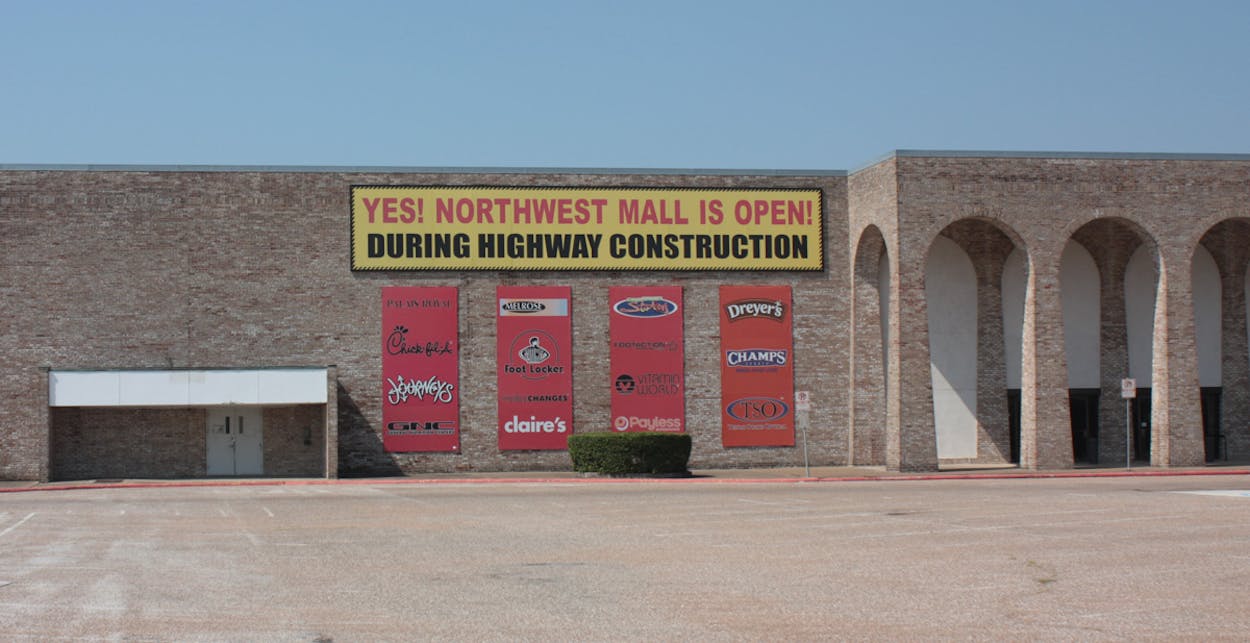To brand Northwest Mall as Houston’s “granddaddy of dead malls,” as one aficionado of such locales has done, is a little unfair. Yes, it is certainly the largest of the, shall we say, transitioning malls still standing in the Bayou City, but to declare it deceased is a tad harsh.
Granted, it is certainly not thriving. I rode my bike there recently, and once I passed the under-construction and newly gargantuan 290/610 interchange, my final approach revealed one of Houston’s more depressing and oceanic expanses of empty concrete. Which is really saying something.
The mall’s surrounding sea of surface lot, perhaps only five percent occupied during my visit, has been cracked by 48 hot summer suns and stained with generations of leaked motor oil. It’s a physical manifestation of the history of this particular mall, one that invites a patron like myself to consider the broader story of the general rise and fall of malls nationwide—and the even bigger story of American capitalism over the past fifty years. (Only in Houston could a parking lot spark such profound musings.)
Malls were once anchored by locally- or regionally-owned department stores. These were later sold out to national chains. Those, in turn, have contracted greatly or collapsed altogether, leaving hundreds of dead or zombie malls behind. In Northwest Mall’s case, roughly a fifth of the property was once anchored by Houston-based Foley’s, which sold out to Macy’s. After suffering Hurricane Ike damage eight years ago, that store never re-opened. And where once stood the other anchor—first a San Antonio-based Joske’s, then JC Penney—there now stands Thompson’s Antique Center of Texas, 108,000-square feet of grandma’s attic that bills itself as the largest antique mall in the Lone Star State. Which is probably true, but nevertheless is not something you usually find in a big-city shopping mall.
This evolution reminds me of how so many courthouse squares around Texas are dotted with antique shops, as many of the businesses on these squares have fled to the edges of town to be on highways near the Walmart. In small-town Texas, this move is normal (if bleak), but here in a large metro area it’s very strange. How many other malls offer human skulls for sale, like the ones you can find at Thompson’s, on floor space likely once given over to Penney’s perfume counter? Well, some might see that as all-too-appropriate for this zombie mall.
You hear it all the time in Houston: How is that place still open? When are they going to tear it down? Isn’t there something better we can put there, like one of those mixed-use developments or a high-rise with ground-floor retail?
There have been talks Northwest Mall will turn into just that or that it will be destined for some other use (a report in 2015 claimed the mall would be the future home of the southern terminus of the Dallas-Houston bullet train, which provoked howls of outrage from those who believe such a hub should go downtown).
And yet . . .
And yet . . .
The zombie mall lumbers on, year after year, perhaps too big to tear down.
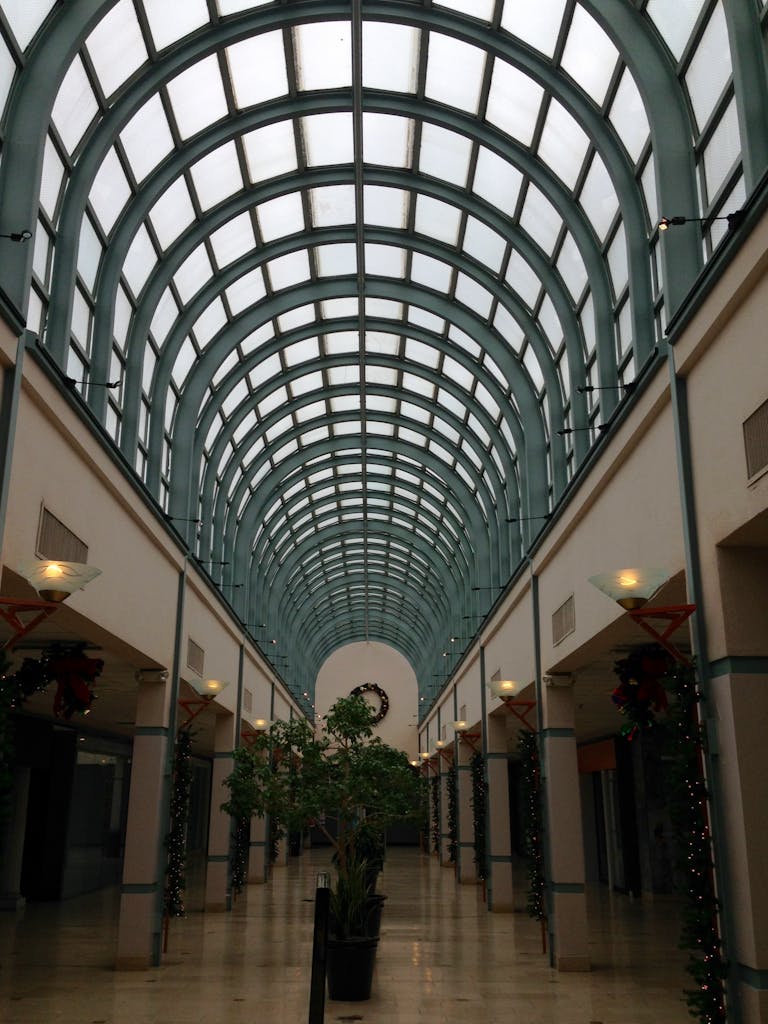
Northwest Mall has been in worse shape than it is today. Five or six years ago, little effort was made to conceal all the vacant storefronts that were then scattered throughout the cross-shaped, 794,092-square-foot shopping center, nor was there much in the way of general upkeep in the common areas. According to a blogger at Deadmalls.com, in 2010, Northwest was only 20 percent occupied. Gone were the record stores, camera shops, video game arcades, movie theaters, and bookshops that once dotted the mall and its adjacent parking lot strips, slain by downloading, digital photography, console gaming, and the likes of Netflix and Amazon.
Today’s Northwest Mall, while still on life support, looks almost cheery and full by comparison to those darker days. In its livelier expanses, such as near the entry to Palais Royal that now passes as its anchor tenant, the landscaping gives off a vague hint of Dallas’s burgeoning NorthPark Mall.* Levcor, Inc., the mall’s current owner, has leased to more small tenants and gussied the place up considerably.
Many of the display windows in the vacant storefronts—far lower than eighty percent, by my estimate—are full of wares from nearby mall shops. In their slumber, they live on as advertisements for the awake. The dead storefronts are primarily clustered on the mall’s farthest reaches, minimizing their exposure to shoppers. And the holiday decor and music on display this holiday season were as festive as any mall this side of the mighty Galleria.
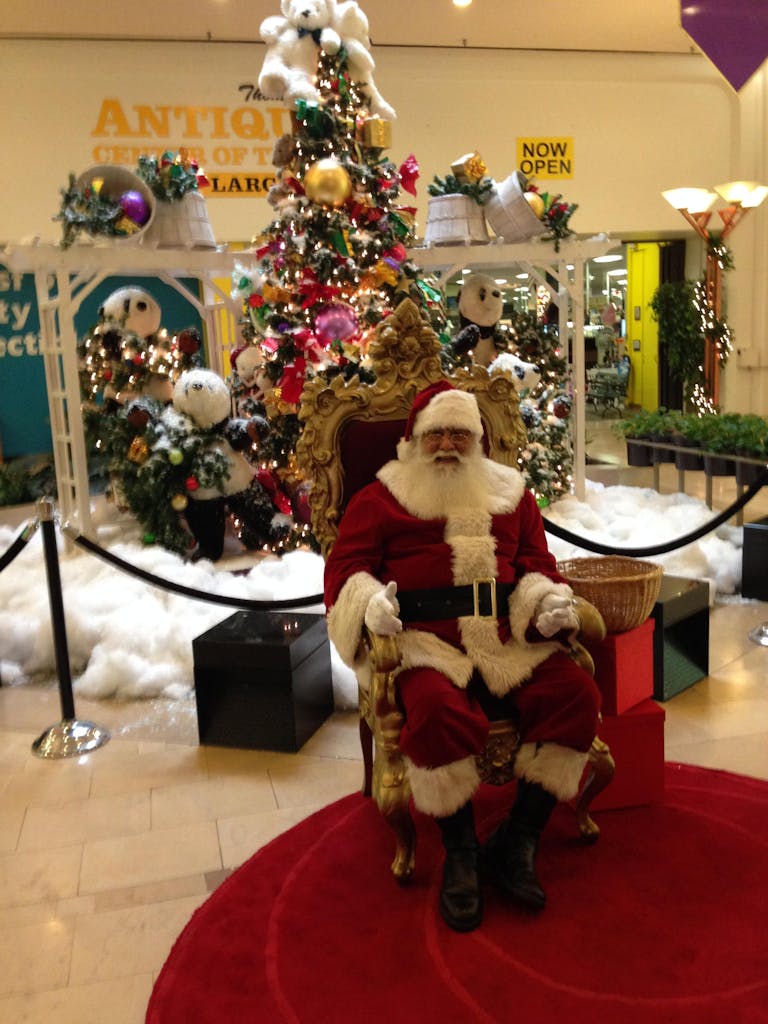
I spoke to Santa and his elf at his North Pole outpost near the antiques emporium. Both of them thought I was crazy when I told them the mall seemed like it was on a bit of an upswing, especially the elf, who fondly recalled its boom years, which lasted from its 1968 opening to the beginning of its slide in the nineties. She and other Houstonians remember a time when the wondrous four-screen multiplex theater opened; when there were good times and sweet treats at Farrell’s ice cream parlor; when the Foley’s was known for a particularly unique gimmick: “Foley’s had the coolest thing in [the] children’s shoes [department],” recalls Ridge Floyd, a native of the neighborhood. “It was a bisected pirate ship, plastered against the wall! Complete with masts and ladders and riggings! Perfect for little boys to climb and jump off. My cousin sprained his wrist pretty badly. But, hey, it was the seventies—nobody cared!”
Celebrities made regular mall appearances when mall appearances were a regular thing. Most of the stars were just passing through on promo tours, but one—a doe-eyed future Hollywood leading lady—came in every day, long before she was famous, long before she starred in The Shining, Popeye, and Annie Hall. Yes, Shelley Duvall was discovered by one of director Robert Altman’s assistants while she was working at Foley’s. A smitten Altman went on to cast her in Brewster McCloud, McCabe & Mrs. Miller, Nashville, and 3 Women, among other films. On another day, in 1992, “Houston Oilers Great, NFL Hall of Famer, Houston’s Favorite Son, and Wrangler Original” Earl Campbell swung by to sign autographs (always with “Peace and Love,” as well as his name) and peddle cowboy-cut Wranglers at $17.99 a pair.
Yet, by the late nineties, while the mall was still attracting celebs, those flush times were soon to end. Towards the end of that decade, appearances were . . . dispiriting. Groover’s Paradise owner Greg Ellis, then a rep for Houston’s Southwest Wholesale music distributors, recalled a sparsely-populated 1997 in-store non-performance by fading country star Doug Supernaw, whose downward spiral took him from the top of the charts to jails and mental health facilities. Ellis also noted that an in-store signing with rising R&B star Brandy at the mall’s Blockbuster Music wasn’t much better. “I had to go up to the four customers in the store and tell them the girl who played Moesha was over there and they should go say hi,” Ellis remembers.
During my recent visit, Santa was the only celebrity in the mall. He told me that he felt Almeda Mall, built simultaneously as Northwest’s clone 27 miles across town, was thriving by comparison. He’d hitched his reindeer there a couple of years ago, and he said it was much livelier than Northwest. Almeda recently landed a Burlington Coat Factory, and Almeda’s Macy’s was still in business, as were its GNC, Bath & Body Works, Dreyer’s, and Claire’s, to name some that Northwest had lost. (Some mall staples remain, like Thirsty’s, Champs, and Visible Changes.)
No kids arrived during our ten-minute conversation, nor did I see any there on subsequent pass-bys, so I guess Santa was right. Who would know more about Houston shopping malls than Santa Claus and his elf? Maybe the relatively high occupancy on my visit was a false dawn.
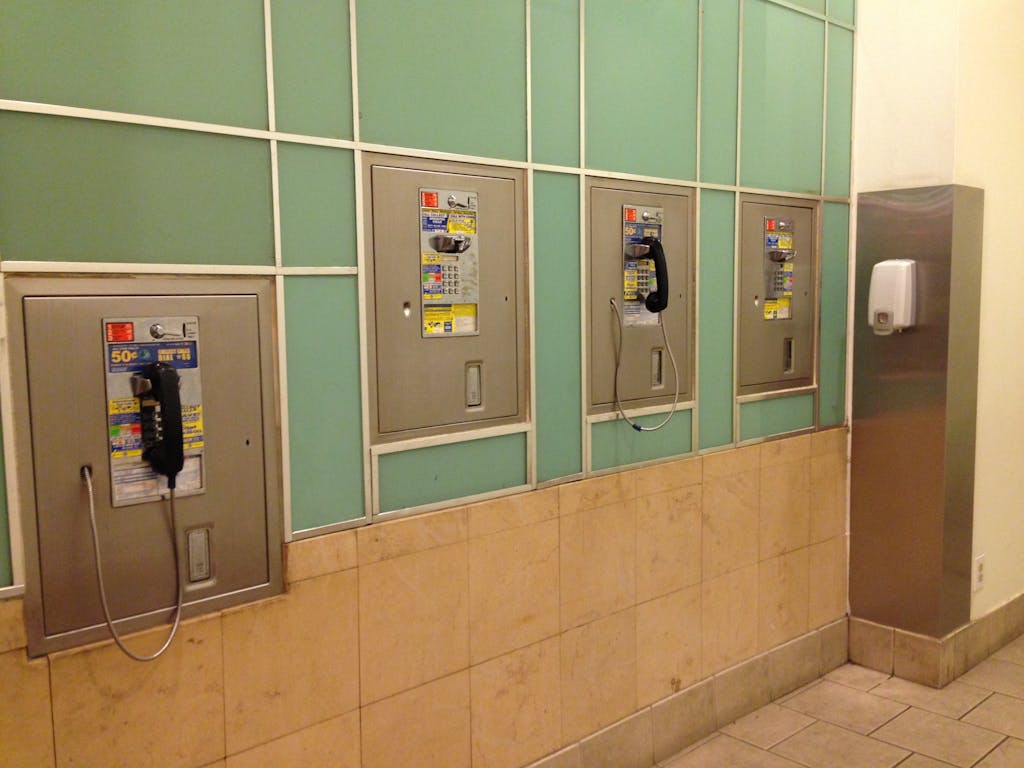
It seems like there is a chance Northwest could turn the corner. Though its immediate neighborhood is an unsightly mess of strip malls and parking lots gashed by an ever-widening Highway 290, the areas adjacent—the greater Heights, Oak Forest, and Garden Oaks to the east and Spring Branch to the west—are gentrifying as never before. Its two main competitors—Memorial City Mall and the Galleria, three miles south along the perpetually jammed West Loop—are now harder to reach in a Houston grown more congested than ever.
Granted, they are much “nicer” than Northwest Mall, which, even its heyday, lagged them in cache. As former mall-goer Kelly Ingram recalled, “[Northwest] was the mall I’d take boys I wanted to make out with, but didn’t want my Galleria or Memorial City friends to know about.”
So, can Northwest Mall one day become something more than a place to take “off-brand” dates?
It’s certainly an interesting place to check out, if only for an hour or two, or many more, if you are into antiques or cheap shoes. It’s a fascinating window into modern, cosmopolitan Houston: today’s Northwest Mall is more identifiably Bayou City than it was in the boom times. Where it was once just another outpost of corporate American capitalism, it is now as diverse as the city around it. You can get a quinceañera dress at Cristalina Boutique, rep your favorite Mexican fútbol club with a jersey from Deportes Rodriguez, sip and chew on a cool tapioca tea from Royal Tea Cafe, chow down on some of the best and cheapest Korean bulgoki in Houston at Sesame Hut, and get the latest H-Town hip-hop CDs and locally-designed hats and tees at Soul 21.
Back at its ribbon-cutting in 1968, the mall was billed as offering “New Directions In Ordinary Shopping.” There’s little that is either new or ordinary left there today, and the new slogan is “Rediscover Northwest Mall.”
What you will find among these one-offs you will find nowhere else, and the scenes you will take in are often exotic, quirky, or somewhat spooky—and occasionally some combination of all of the above.
Several of the stores, a couple of them purveyors of urban-style clothing, were fully stocked and had the lights on, but were inexplicably closed at mid-afternoon on a workday amid the pre-Christmas rush. Peering through their windows gives you an Omega Man feeling—all the world’s goods are yours alone.
Other slightly surreal retail (surrealtail?) experiences there bring to mind other disquieting films, always from the seventies for some reason, likely a symptom of the mall’s stubbornly tenacious Jimmy Carter-era vibe.
Wade Williams, an attorney and Northwest Mall aficionado, says there are invariably no fewer than three employees working at Champs, but never, in his extensive experience, any customers at all. “I stopped and talked to a manager one time, and he swore they did good business,” he says. “There’s some Wicker Man shit going on in that mall.”
And then there’s the Palais Royal. “I bought some pants there last month,” Williams says. “I asked a woman how long she’d worked there and she said thirty years. I asked her what I ask everyone who works there, which is, ‘how the hell is it still open?’ And every time I ask that question the person turns into the banjo kid from Deliverance. Not a freaking word. Omerta.”
Northwest has taken on some unconventional tenants in recent years, notably the Southern Apache Museum, which, while claiming to be open 12 p.m. to 6 p.m. every day of the week, has never appeared to be open on any of my half-dozen or so visits to the mall. A recent phone call to the museum also went unanswered, with a recording saying it was “unavailable.” (The mere existence of an Apache museum in Houston, much less this mall, is odd enough, as no band of the Apache roamed very far east of San Antonio, though the organization’s website bills it as a place to learn more about Native American culture in general.)
There’s also the Express Children’s Theatre, the headquarters for Mixteco Ballet Folklorico, and a clubhouse-slash-diorama for northwest Houston’s model train enthusiasts, open only on Saturdays. And as with many elderly malls, higher education helps pay the bills, here in the form of a medical training school that now stands where there once was a Comp USA.
Northwest also has a higher density of kiosks and hallway attractions than most malls, including a hurricane simulator. For $2 you can step inside a tubular canister and experience winds similar to those that put the Foley’s/Macy’s out of commission.
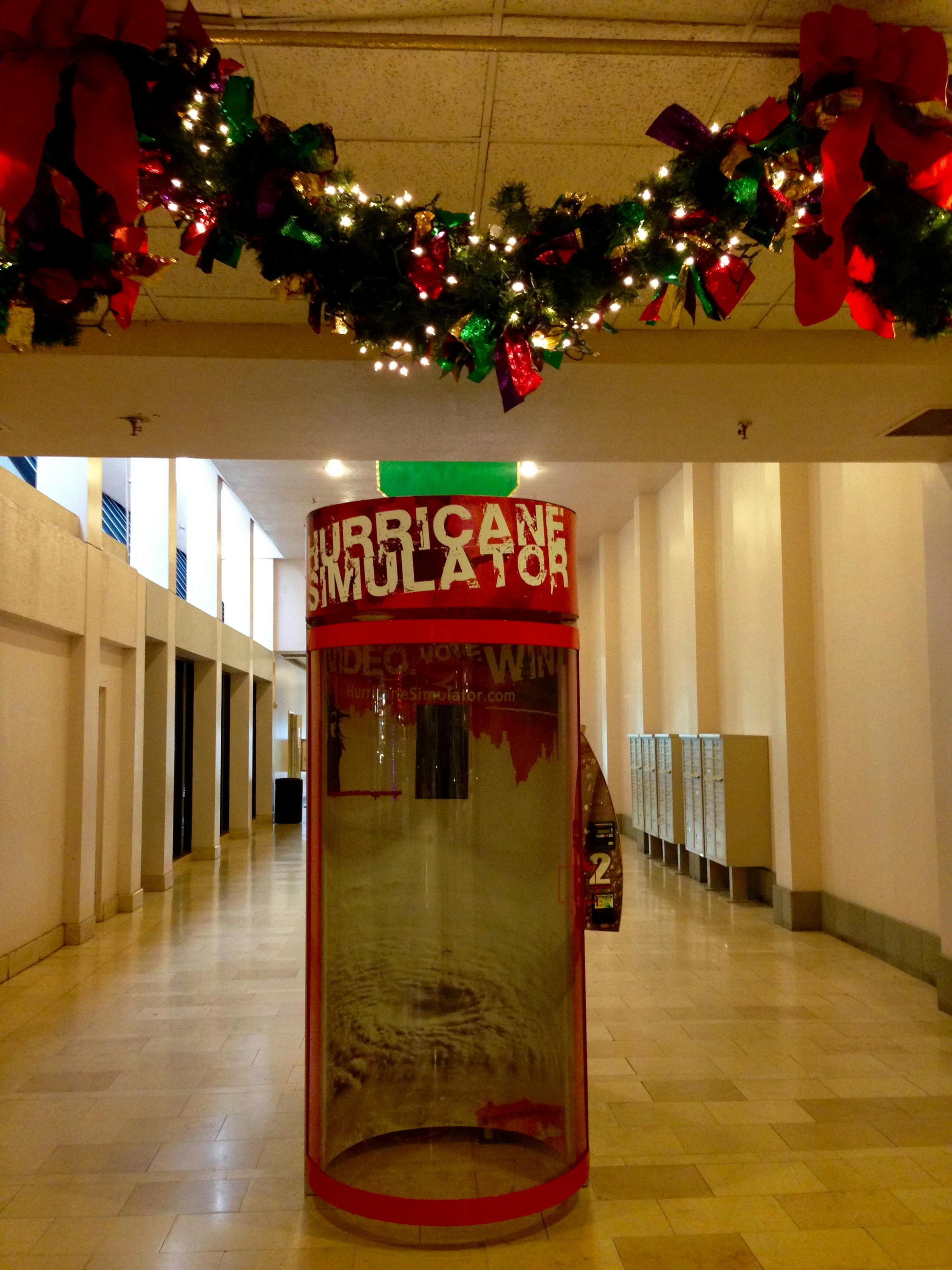
Walking on, at a nearby kiosk I found a small library of Christian literature standing next to a TV playing an evangelical DVD. Next to that was a diorama, apparently hand-crafted by the MIA kiosk proprietor, of dolls in a prison setting, the guys playing checkers, the girls digging into their chow, all of them at replicas of those grim stainless steel jail tables, flanked by two papier-mache jail cells and watched over by other dolls in guard uniforms.
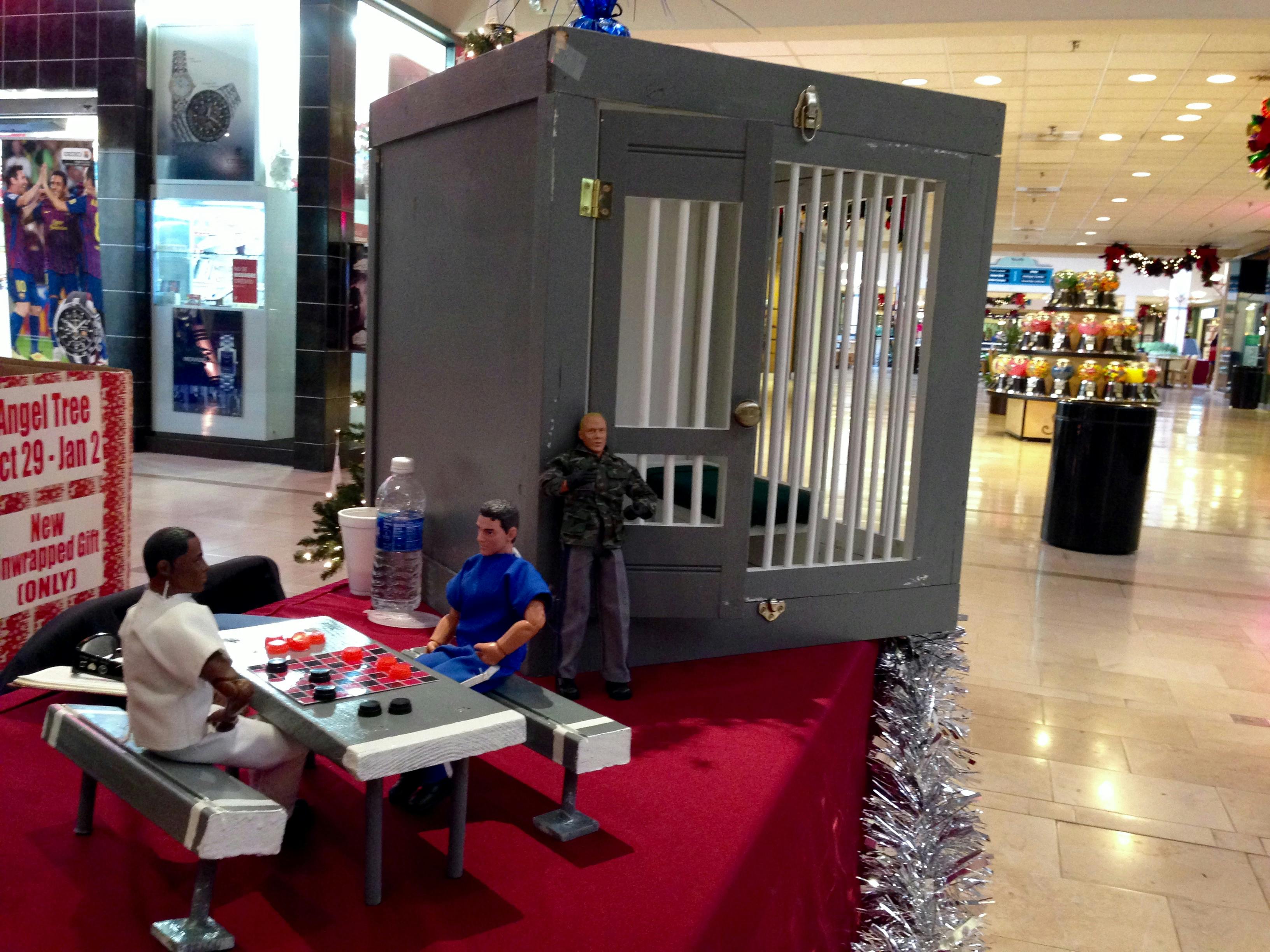
Not a scene you would find in the Galleria’s hallowed halls. And where was the proprietor? Who could explain this to me?
Outside one of a quartet of South Asian and Middle Eastern-run jewelers, the husband-and-wife owners had set up display tables outside the store, flanking the doorway, and chairs for each of them alongside, bringing the look of an Istanbul bazaar to the mall.
And passing by another such store, I heard one of the strangest conversations I’ve ever heard in a mall.
“Please, I assure you, it was not my fault,” said the shop’s proprietor. Across the counter from him was a short and stocky much younger man wearing a striped blue tracksuit, his hair dark and spiky. I could neither see his face nor hear what he was saying, but whatever the proprietor told him did not assuage his temper. “No! Please! I beg of you! I will lose my job if you go through with this!”
I kept walking. Not my business, plus tracksuit guy looked a little shady, and apparently only the jeweler’s job was on the line, not his life. I swung back around a few minutes later and the proprietor was now alone, seated behind the counter, his eyes closed, behind a handwritten sign that read, “Praying. Please return in 20 minutes.”
Mere minutes later, I strolled past the food court, where a thirty-something James Spader-looking fellow was sipping coffee with a grandmotherly type.
“No,” he said to her, leaning across the table. “That is not acceptable.” The woman looked aggrieved, leaning back in her chair a few degrees off-kilter. “You need to tell me why you make the decisions you make,” the man went on. “Why do you continue to do these things?”
Again, I kept walking. Not my monkeys, not my circus. But once again, very strange. Their body language did not indicate any sort of family relationship, and not many sons would talk to their mother like that, at least not in a mall food court decked up for Christmas with Bing Crosby crooning over the speakers.
What could this be? The worst job interview ever? Life-coaching gone bad?
And then it dawned on me: this was probably a stern post-meeting Alcoholics Anonymous sponsor-sponsee chat, as one of the mall’s largest tenants is the Post Oak Club, an AA facility whose outdoor smoking area is shaded by the eponymous trees. (The Post Oak Club is also about 12 steps away from a business that tests for drugs and alcohol.)
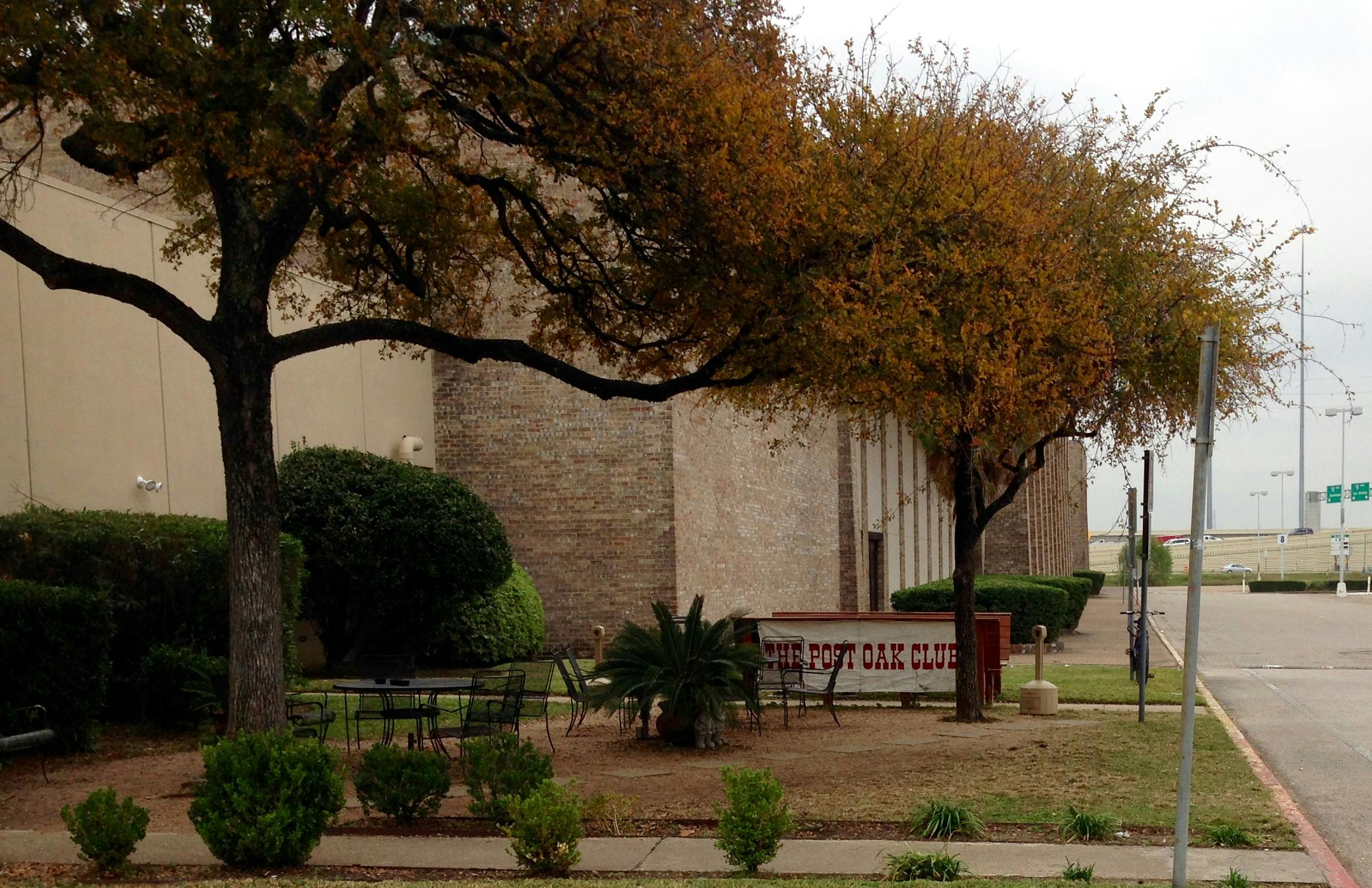
Just a little farther away from that was the food court’s most unusual establishment: Bundt Cake-A-Holic, purveyors of alcohol-infused cakes, whose slogan is “Don’t Bundt and Drive” and where you can order a Mudslide Bundt: “Talk about happy times!” reads the online menu. “This is a true foodgasium [sic]… Talk about eyes rolling back in the head, loud screams, etc.” (Judging by the calm, nobody in the food court was eating a chunk of mudslide, apparently.)
In any case, one thing is certain: oddities abound at Northwest Mall.
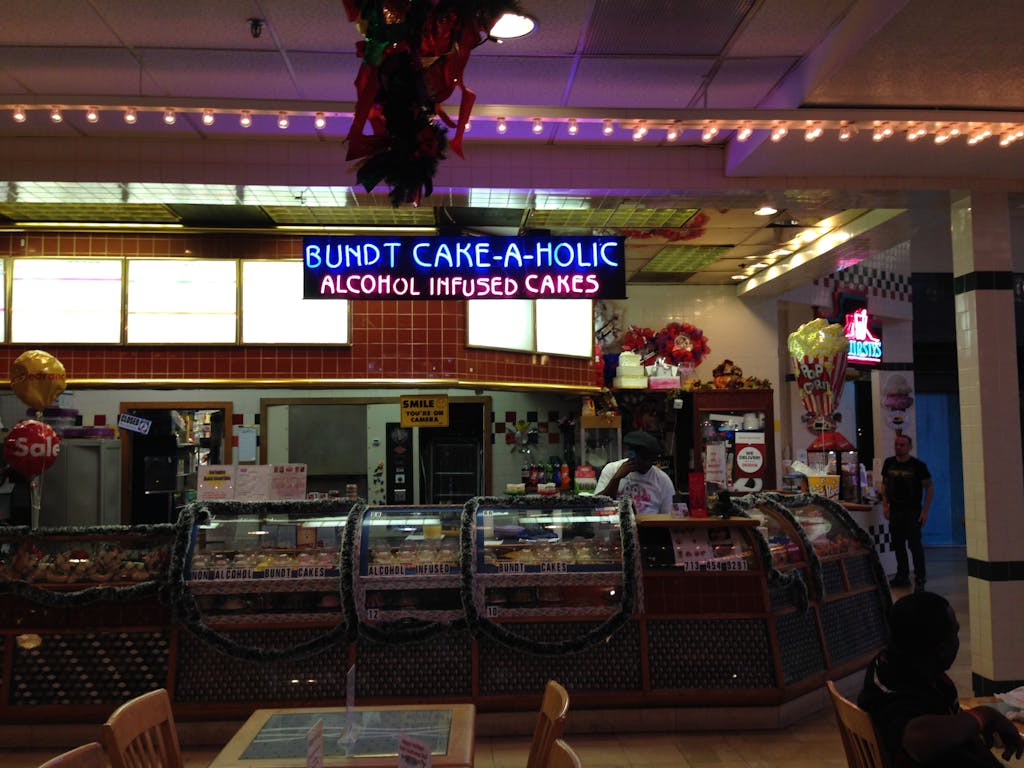
Does Northwest Mall have a chance in its current form? Will malls come back into fashion? Who would be their tenants, as Internet-based retail continues to erode bricks-and-mortar? And won’t those driverless cars eliminate the need for 98 percent of that vast parking lot?
Those dilemmas are hardly unique to Northwest Mall. If present trends continue, the space given over to retail and parking will shrink considerably in the coming years. Northwest Mall’s future is contingent on those trends and other vast forces beyond its control, and its fate is as unclear and mysterious as that doll’s in the strange jail diorama.
I emailed Levcor for comment and, as of publication, received no response. But the mall has been in the news a few times in the past year or two. The mall was under contract to be sold in 2015. A subsequent report published in June 2016 reiterated that the station would be near the mall, a statement also echoed on Levcor’s own website. The company has also announced its current mall redevelopment plan: Post Oak Market, a mixed-use redevelopment that would include hotels, offices, apartments, and retail “within a dense urban environment in the heart of Houston” and “promoting walkability and new design principles.”
But for now the whole thing is in TxDOT limbo. It seems that all parties want to wait until the construction on the 290 / 610 / I-10 interchange is complete before they so much as a lift a shovel. That project is supposed to be finished late in 2017 or 2018, and according to recent reports, the Dallas train is on track for a 2022 launch.
And so it looks as if Northwest Mall will live to the ripe old age of fifty in 2018, growing more and more endearingly eccentric as it settles into middle age.
*Correction: A previous version of this article mistakenly referred to Dallas’s NorthPark Mall as Highland Mall. We regret the error.

